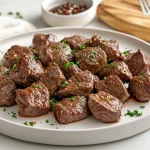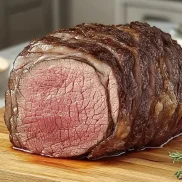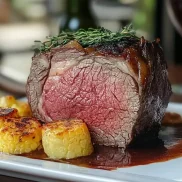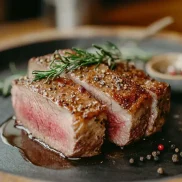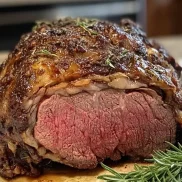When it comes to choosing a cut of beef for your next meal, it can feel like navigating a maze of options. Among the many choices, beef tenderloin tips often stand out for their reputation of being tender, flavorful, and versatile. But are beef tenderloin tips tender? This is a question many meat enthusiasts and home chefs ask when deciding if this cut deserves a spot on their dinner table. In this article, we’ll delve into the ins and outs of beef tenderloin tips, exploring their qualities, preparation methods, and more, so you can make an informed decision. For an array of recipe ideas, check out our beef tenderloin tips recipe.
Tenderloin tips, often regarded as a premium cut, are praised for their fine texture and rich flavor. But their true potential lies in understanding what they are, how they differ from other cuts, and why they’re nutritionally beneficial. Let’s dive in and uncover everything you need to know about beef tenderloin tips.
Table of Contents
Understanding Beef Tenderloin Tips
Beef tenderloin tips might not always steal the limelight like a ribeye or T-bone steak, but they have a unique charm that deserves recognition. Known for their tender texture and exceptional taste, tenderloin tips are perfect for those who want to enjoy a premium beef experience without breaking the bank. To fully appreciate these tips, it’s important to first understand their origin, characteristics, and value in the culinary world.
What Are Beef Tenderloin Tips?
Beef tenderloin tips are small cuts taken from the ends of the beef tenderloin, which is a long, narrow muscle running along the cow’s spine. This muscle is not heavily used, making it incredibly tender. The tips are essentially the trimmings or smaller pieces leftover when butchers prepare whole tenderloin roasts or steaks. Despite being smaller in size, these tips retain all the qualities that make the tenderloin prized—a soft texture, mild flavor, and an ability to soak up marinades and seasonings beautifully.
These cuts are especially popular among chefs and home cooks who appreciate their versatility. They can be grilled, seared, roasted, or even used in stir-fries. Their smaller size allows for quicker cooking, making them an excellent choice for weeknight meals or when you’re short on time.
How Beef Tenderloin Tips Differ from Other Cuts
While beef tenderloin tips share many characteristics with the larger tenderloin cuts, they differ in key ways that influence their use in the kitchen. Unlike steaks or roasts, tenderloin tips are irregularly shaped, making them ideal for recipes that don’t require a uniform cut, such as skewers, stews, or sautéed dishes.
Another key distinction lies in their texture and flavor. While tenderloin steaks boast a buttery texture and subtle flavor, the tips often have a slightly more pronounced beefy taste due to their smaller size and surface area. This makes them a fantastic option for those who love tender beef but also crave a bit more flavor complexity. Additionally, tenderloin tips are often more affordable, providing an economical way to enjoy the luxurious qualities of tenderloin without the hefty price tag of a full roast or filet mignon.
Nutritional Profile of Beef Tenderloin Tips
Beyond their delicious taste and tender texture, beef tenderloin tips offer impressive nutritional benefits. They are a high-quality source of protein, delivering essential amino acids that support muscle repair and overall health. Additionally, these tips are relatively lean compared to other cuts like ribeye or short ribs, making them an excellent choice for health-conscious individuals.
A standard serving of beef tenderloin tips (approximately 3 ounces) typically contains around 180 calories, 26 grams of protein, and just 7 grams of fat. They are also rich in essential vitamins and minerals, including iron, zinc, and B vitamins like niacin and vitamin B12. These nutrients are crucial for energy production, immune support, and maintaining healthy red blood cells.
Incorporating tenderloin tips into your diet can be a smart way to enjoy a balance of taste and nutrition. Whether you’re preparing a special dinner or looking for a quick, healthy meal, these cuts can fit seamlessly into a variety of recipes while supporting your dietary goals.
By understanding the unique qualities of beef tenderloin tips, you can fully appreciate why they’re such a sought-after cut. Up next, we’ll explore what makes them tender and how to best prepare them for maximum enjoyment.
Are Beef Tenderloin Tips Tender? Understanding Their Texture and Quality
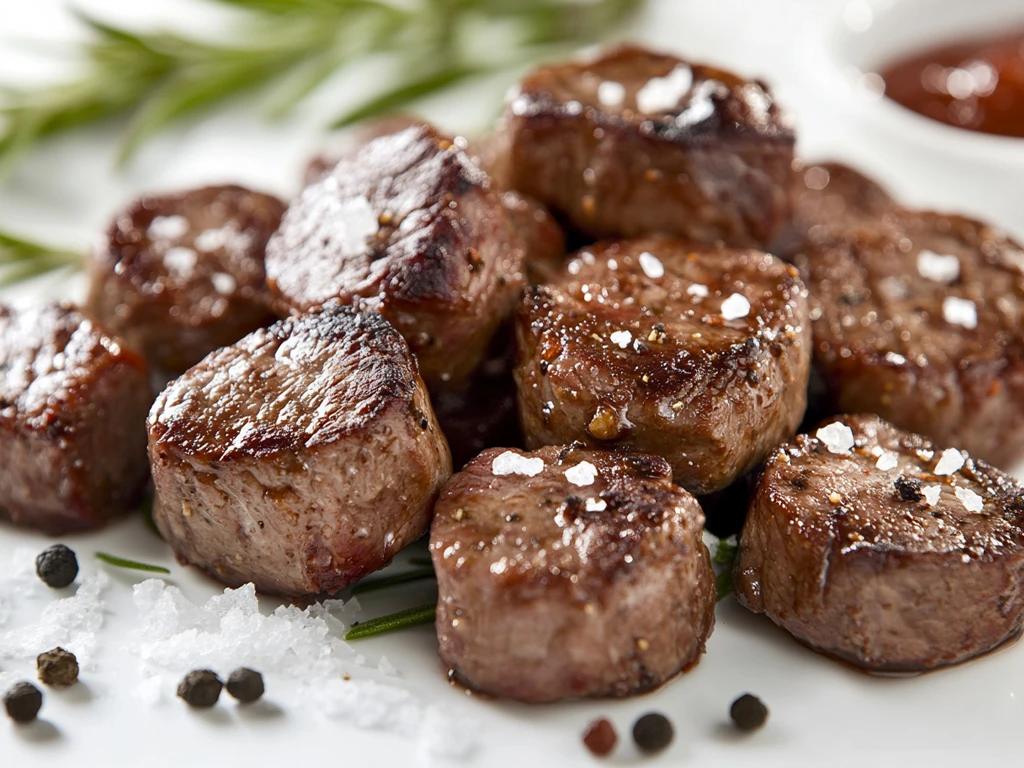
Tenderness is one of the defining qualities that make beef tenderloin tips a favorite among meat lovers. These small, flavorful cuts are renowned for their ability to melt in your mouth when prepared correctly. But what exactly contributes to their tender nature? Let’s explore why beef tenderloin tips are considered tender, how they stack up against other cuts, and the key factors that influence their texture.
Why Are Beef Tenderloin Tips Considered Tender?
Beef tenderloin tips owe their tender texture to the part of the cow they come from. The tenderloin is a long, cylindrical muscle located along the spine. Because this muscle is not used for movement or weight-bearing, it remains soft and delicate. Unlike more active muscles, such as those in the shoulders or legs, the tenderloin stays relaxed, leading to minimal connective tissue and a finer grain.
The small size of tenderloin tips further enhances their tenderness. These cuts are usually taken from the ends of the tenderloin, where the muscle tapers off. The minimal marbling—or fat interspersed within the meat—means the tips are naturally lean, but their fine muscle fibers ensure they remain tender when cooked properly. Additionally, the tips’ ability to absorb marinades and seasonings makes them ideal for recipes that require extra flavor without sacrificing texture.
Comparing Tenderloin Tips with Other Tender Cuts
When it comes to tenderness, beef tenderloin tips often compete with other premium cuts like filet mignon, ribeye, and strip steak. While filet mignon is undeniably the most tender cut from the tenderloin, the tips come remarkably close in texture, offering a similar melt-in-your-mouth quality at a more budget-friendly price.
Ribeye, on the other hand, is known for its rich marbling and bold flavor, but it doesn’t match the tenderloin tips in softness. Strip steaks, though tender and flavorful, have a firmer bite compared to the buttery smoothness of tenderloin tips. This makes tenderloin tips a versatile choice for dishes where tenderness takes center stage, such as sautés, stir-fries, or kabobs.
In essence, beef tenderloin tips bridge the gap between luxury and accessibility. They provide a taste of the premium experience offered by filet mignon without requiring you to splurge. For many, this makes them a top choice for achieving a balance between tenderness and cost-effectiveness.
Factors Affecting the Tenderness of Beef
Even though beef tenderloin tips are naturally tender, several factors can influence their texture. Understanding these elements can help you ensure that every bite is as tender as you expect.
- Quality of the Meat: The tenderness of beef tenderloin tips begins with the quality of the cut itself. Prime-grade beef, which has superior marbling and texture, tends to be more tender than lower grades like select or choice. Always opt for fresh, high-quality beef to maximize tenderness.
- Preparation Methods: How you prepare the tenderloin tips plays a significant role. Overcooking can lead to dryness, even in naturally tender cuts. Cooking techniques such as searing, grilling, or broiling—done for a short time and at high heat—help lock in moisture and preserve tenderness.
- Marination: Marinades can work wonders in enhancing the tenderness of beef tenderloin tips. Ingredients like vinegar, citrus juice, or yogurt contain acids that break down muscle fibers, making the meat even more tender. A simple marinade of olive oil, garlic, and fresh herbs can elevate the texture and flavor.
- Resting Time: Allowing the beef to rest after cooking is crucial. Resting lets the juices redistribute within the meat, resulting in a more tender and succulent bite. Skipping this step can cause the juices to escape, leaving the tips dry and less enjoyable.
- Knife Skills: Properly slicing beef tenderloin tips against the grain can make a noticeable difference. Cutting against the direction of muscle fibers shortens them, making the meat easier to chew and amplifying its tender texture.
By considering these factors, you can ensure that your beef tenderloin tips are consistently tender and flavorful. Whether you’re serving them as a main course or incorporating them into a dish, their texture will always leave a lasting impression.
Cooking Methods for Enhancing Tenderness
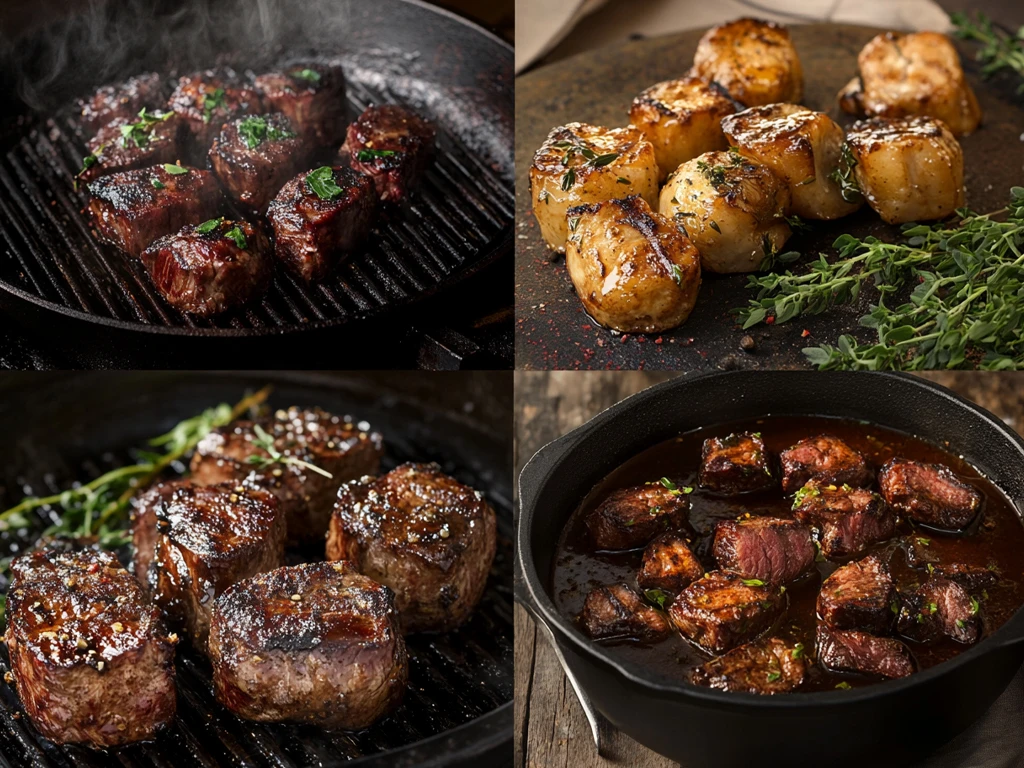
Cooking beef tenderloin tips to perfection requires the right techniques to maximize their natural tenderness and flavor. Whether you prefer the smoky aroma of grilled meat, the rich caramelization from a seared pan, or the comforting succulence of slow-cooked dishes, there’s a method to suit every taste and occasion. Let’s explore the best ways to prepare tenderloin tips, ensuring they remain juicy and tender.
Best Cooking Techniques for Tenderloin Tips
Beef tenderloin tips are versatile, allowing for various cooking methods that emphasize their soft texture. The key to success lies in choosing the right technique for your dish and handling the meat with care. Here are three standout methods that enhance tenderness while delivering mouthwatering results.
Grilling Tips for Perfect Tenderloin
Grilling tenderloin tips brings out their natural flavors and adds a delicious smoky char. Follow these tips to achieve perfection:
- Preheat the Grill: Ensure your grill is preheated to medium-high heat. A hot grill helps sear the outside quickly, locking in the juices.
- Marinate for Flavor: Use a simple marinade with olive oil, garlic, and herbs. This not only enhances flavor but also adds moisture.
- Don’t Overcook: Grill tenderloin tips for about 3-4 minutes per side for medium-rare. Use a meat thermometer to ensure an internal temperature of 135°F.
- Rest Before Serving: Once cooked, let the tips rest for 5-10 minutes. This step allows the juices to redistribute, ensuring each bite is tender.
Grilled tenderloin tips pair beautifully with a fresh chimichurri sauce or a squeeze of lemon for added brightness.
Pan-Seared Perfection: A Step-by-Step Guide
Pan-searing tenderloin tips creates a beautiful crust while keeping the interior moist and tender. Here’s how to master this method:
- Choose the Right Pan: Use a heavy-bottomed skillet or cast-iron pan for even heat distribution.
- Pat the Tips Dry: Before cooking, pat the tenderloin tips dry with paper towels to promote better browning.
- Season Generously: Sprinkle salt, pepper, and your favorite herbs over the tips. For an extra layer of flavor, add crushed garlic and rosemary.
- Sear on High Heat: Heat the pan with a splash of oil until it’s shimmering. Sear the tips for 2-3 minutes per side until a golden-brown crust forms.
- Finish with Butter: Add a knob of butter to the pan during the last minute of cooking. Baste the tips with the melted butter for added richness.
Serve pan-seared tenderloin tips with mashed potatoes or roasted vegetables for a comforting meal.
Slow Cooking: Unlocking the Full Tenderness
Slow cooking is a fantastic way to enhance the tenderness of beef tenderloin tips, especially in dishes like stews or braises. Here’s a step-by-step approach:
- Brown the Meat First: Before slow cooking, sear the tenderloin tips in a hot pan to develop a rich, caramelized exterior.
- Add Liquid and Aromatics: Place the tips in a slow cooker with beef broth, red wine, onions, garlic, and herbs. The liquid helps break down the muscle fibers for a fork-tender result.
- Set the Right Temperature: Cook on low for 6-8 hours or on high for 3-4 hours. Low and slow is the key to achieving unparalleled tenderness.
- Avoid Overcrowding: Ensure the meat is arranged in a single layer and submerged in liquid for even cooking.
- Check for Doneness: Use a fork to test the meat—it should easily fall apart when done.
Slow-cooked tenderloin tips are perfect for hearty dishes like beef bourguignon or served over creamy polenta.
By mastering these cooking methods, you can elevate the tenderness and flavor of beef tenderloin tips, impressing your guests and satisfying your cravings. Whether you choose the smoky grill, the flavorful sear, or the melt-in-your-mouth slow cook, these tips will guarantee delicious results every time.
How to Choose High-Quality Tenderloin Tips
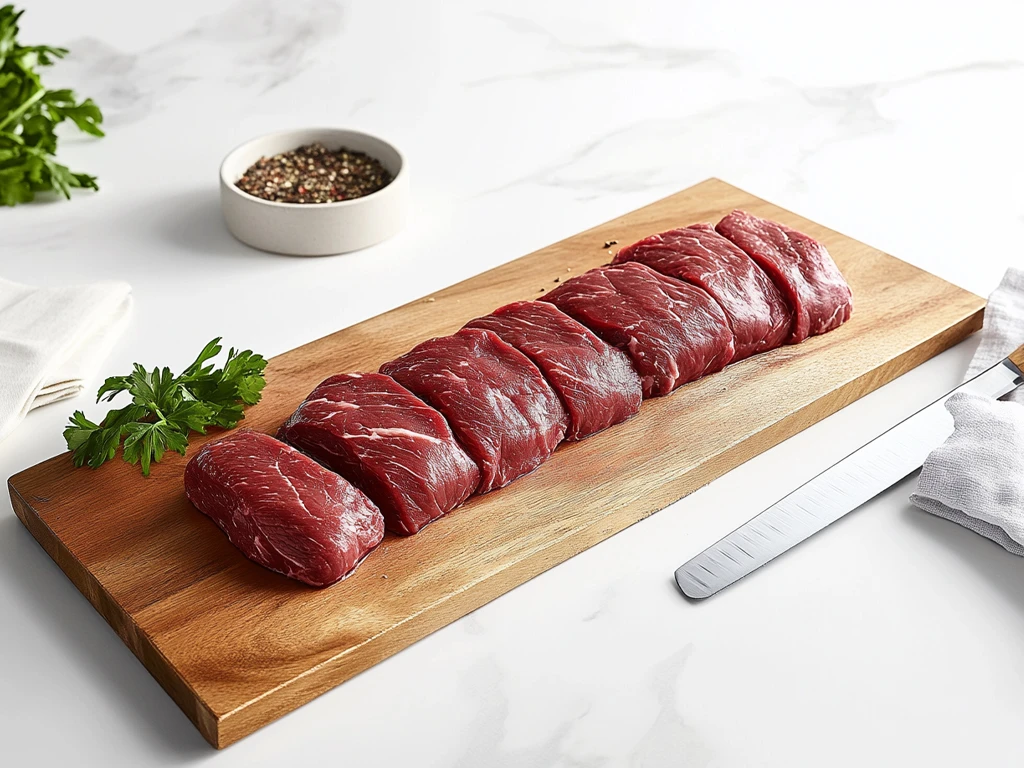
Choosing the perfect beef tenderloin tips is the first step in ensuring a tender and flavorful meal. With a few key insights, you can navigate the meat counter with confidence and select cuts that deliver on quality and taste. From understanding marbling to spotting freshness, here’s everything you need to know about picking the best tenderloin tips.
Selecting the Best Cuts from the Butcher
The journey to a delicious dish begins at the butcher’s counter. To select the best tenderloin tips:
- Establish a Relationship with Your Butcher: A knowledgeable butcher can be your best ally. Don’t hesitate to ask questions about the origins of the meat or for recommendations on the freshest cuts.
- Look for Consistent Size: High-quality tenderloin tips should be uniform in size. This ensures even cooking and prevents smaller pieces from overcooking while larger ones remain underdone.
- Ask About the Grade: Inquire whether the beef is USDA Prime, Choice, or Select. Prime-grade beef is the highest quality, with superior marbling and tenderness, followed by Choice and then Select.
- Inspect the Packaging: If purchasing pre-packaged tenderloin tips, ensure the packaging is intact with no signs of tears or excess liquid, which could indicate compromised freshness.
Understanding Marbling and Its Role in Tenderness
Marbling—the thin streaks of fat interspersed throughout the meat—is a crucial indicator of quality and tenderness. Here’s what to know about marbling:
- Why Marbling Matters: Fat within the muscle fibers melts during cooking, infusing the meat with flavor and moisture. Tenderloin tips with fine, evenly distributed marbling are more likely to be tender and juicy.
- Identify Good Marbling: Look for small, thin lines of white fat throughout the meat rather than large chunks. Excessive external fat may not contribute to the tenderness or flavor and could lead to wastage.
- Choose Based on Your Recipe: Cuts with moderate marbling are ideal for high-heat methods like grilling or pan-searing, as the fat renders quickly. For slow-cooked dishes, slightly leaner cuts may work better to avoid excess grease.
Signs of Fresh and High-Quality Meat
Freshness is key to achieving the best flavor and texture in your tenderloin tips. Keep an eye out for these signs:
- Color: High-quality beef should have a bright, cherry-red hue. Avoid meat that looks brown or grey, as this could indicate age or improper storage.
- Texture: The surface of the meat should be firm to the touch and slightly moist but not slimy. Sliminess is a warning sign of spoilage.
- Smell: Fresh beef should have a clean, mild aroma. If the meat smells sour or off, it’s best to avoid it.
- Expiration Date: Always check the sell-by or use-by date on packaged meat. Choose cuts with a date as far in the future as possible to ensure maximum freshness.
- Minimal Purge: Purge refers to the liquid that accumulates in packaged meat. Excess liquid can indicate that the meat is losing its natural moisture, which could compromise tenderness.
By focusing on these factors, you’ll ensure that the beef tenderloin tips you select are of the highest quality. Whether you’re planning a special occasion meal or a weeknight dinner, choosing the right cuts sets the foundation for a delicious and satisfying dish.
Frequently Asked Questions
What are beef tenderloin tips good for?
Beef tenderloin tips are incredibly versatile and perfect for a variety of dishes. Their natural tenderness and rich flavor make them ideal for sautéing, stir-frying, grilling, or roasting. They work beautifully in dishes like beef stroganoff, kabobs, and even hearty stews. Because of their small size and quick cooking time, they’re a convenient option for weeknight meals while still offering a gourmet touch. Learn more
Are tenderloin tips the same as filet mignon?
No, tenderloin tips are not the same as filet mignon, although both come from the tenderloin muscle. Filet mignon is a specific, highly prized cut taken from the center of the tenderloin, while tenderloin tips are smaller pieces trimmed from the ends or irregularly shaped sections of the muscle. Both are tender, but filet mignon is typically more uniform in size and considered a premium cut, whereas tips are more affordable and versatile. Learn more
Which cooking method is best for beef tenderloin?
The best cooking method for beef tenderloin depends on your desired outcome and the specific cut you’re using. For tenderloin tips, grilling, pan-searing, and slow cooking are excellent options. Grilling brings out a smoky char, pan-searing creates a rich crust, and slow cooking ensures the meat remains tender and juicy in stews or braises. Each method highlights the natural tenderness and flavor of the cut. Learn more
How do you ensure tenderloin tips stay tender during cooking?
To keep tenderloin tips tender, avoid overcooking and always let the meat rest after cooking. Use high heat for a short duration when grilling or pan-searing to lock in juices, and opt for marinades with acidic components like vinegar or citrus to break down muscle fibers. For slow-cooking, ensure the meat is submerged in liquid to maintain moisture.
Are tenderloin tips a budget-friendly option?
Yes, tenderloin tips are often more affordable than whole tenderloin or filet mignon, making them a budget-friendly way to enjoy the tenderness and flavor of this premium cut. They’re a great choice for home cooks looking to elevate meals without breaking the bank.
Can tenderloin tips be frozen?
Absolutely. Tenderloin tips freeze well and can be stored for up to six months if properly wrapped in airtight packaging. To preserve quality, thaw them in the refrigerator overnight before cooking. Avoid refreezing once thawed to maintain the best texture and flavor.
Conclusion
Beef tenderloin tips are a culinary gem that combine exceptional tenderness with incredible versatility. Whether you’re planning a special occasion meal or simply want to elevate a weeknight dinner, this cut delivers every time. From understanding what makes them tender to selecting the highest-quality cuts and mastering the best cooking techniques, you now have all the tools to make the most of this delectable beef option.
So, are beef tenderloin tips tender? Absolutely. With their fine texture, subtle flavor, and adaptability to various cooking methods, they’re a fantastic addition to any recipe repertoire. By following the insights and tips in this guide, you’ll be able to create meals that impress with every bite. It’s time to savor the tender, flavorful magic of beef tenderloin tips!

